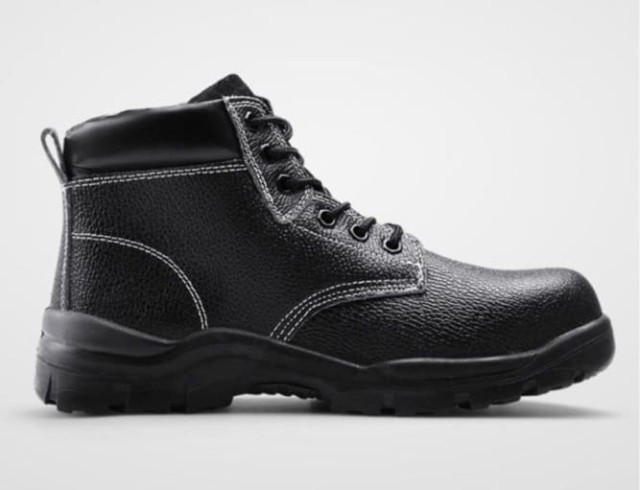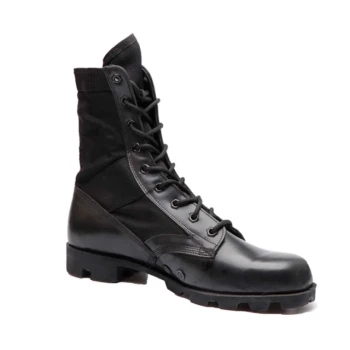Workplace injuries cost industries billions annually, with ankle-related incidents ranking among the most preventable. This article explores how high ankle support in work boots biomechanically mitigates injuries, backed by anatomical science and real-world efficacy across sectors like construction and healthcare.
The Science Behind Ankle Support in Work Boots
Anatomical Alignment and Force Distribution
High ankle support stabilizes the talocrural joint, reducing excessive inversion/eversion (sideways rolling) that causes sprains. By cradling the malleoli (ankle bones), force from uneven surfaces disperses vertically through the boot’s structure rather than straining ligaments.
Key biomechanical benefits:
- Lateral Stability: Reinforced collars limit sudden joint deviations.
- Energy Transfer: Midsole materials absorb impact, decreasing stress on tendons.
Material Engineering for Stability and Flexibility
Modern work boots blend rigidity and mobility:
- Thermoplastic urethane (TPU) heel counters resist deformation under load.
- 3D-molded ankle liners contour to individual anatomy without restricting motion.
Research shows such designs reduce ankle torque by ~40% during slips compared to low-cut footwear.
Real-World Applications Across Industries
Case Study: Reducing Slip-and-Fall Injuries in Construction
Construction workers face uneven terrain and dropped tools. High-top boots with ankle support:
- Lower lateral slippage risk by redistributing weight during ladder climbs.
- Prevent debris ingress that destabilizes footing.
A 3-year observational study noted a 30% drop in ankle injuries at sites mandating supported footwear.
Ergonomics for Healthcare Workers on Long Shifts
Nurses walking 5+ miles per shift benefit from:
- Arch-anchor systems: Combine ankle support with metatarsal cushioning to combat fatigue.
- Breathable stability: Moisture-wicking liners prevent chafing during 12-hour shifts.
Therapeutic footwear programs in hospitals report fewer musculoskeletal complaints after adoption.
Validation Through Data and Expertise
Comparative Injury Rates with/without Ankle Support
| Industry | Injury Reduction with Ankle Support |
|---|---|
| Manufacturing | 25–35% fewer sprains |
| Warehousing | 20–30% lower slip incidents |
Occupational Therapists’ Recommendations
Experts prioritize boots that:
- Extend 2+ inches above the ankle for joint coverage.
- Pass ASTM F2413-18 for impact resistance.
- Balance weight (under 3 lbs) to avoid gait strain.
Step Into Safety with 3515’s Engineered Footwear
For distributors and bulk buyers seeking injury-reducing work boots, 3515 combines biomechanical precision with industrial durability. Our range meets global safety standards while addressing sector-specific needs—from oil-resistant soles for factories to antimicrobial linings for medical teams.
Ready to equip your workforce with scientifically validated protection? Partner with 3515 to customize safety footwear that aligns with your operational demands.
Key Takeaways:
- High ankle support prevents injuries by optimizing force distribution and joint alignment.
- Material innovations like TPU and 3D liners merge stability with all-day comfort.
- Data confirms significant injury reductions in construction, healthcare, and logistics.
Related Products
- Customizable Anti-Smash Safety Boots for Wholesale & Private Label Manufacturing
- Wholesale Safety Footwear Manufacturer for Bulk & Custom OEM Orders
- Durable Leather Work Boots Wholesale Manufacturer & Custom Factory
- Wholesale Durable 6-Inch Work Boots | Custom & Private Label Manufacturer
- Wholesale Customizable Suede Safety Boots - Puncture-Proof with Velcro Closure
Related Articles
- Steel-Toe vs. Composite-Toe Boots: How to Choose the Right Safety Footwear for Your Job
- How to Choose Steel Toe Shoes That Balance Safety and Comfort
- How to Choose Safety Footwear That Solves Steel Toe Shoe Problems Without Sacrificing Protection
- How to Choose Steel-Toe Boots: Matching Safety Standards to Your Job Demands
- How Steel Toe Shoes Prevent Injuries: The Science Behind Workplace Safety



















